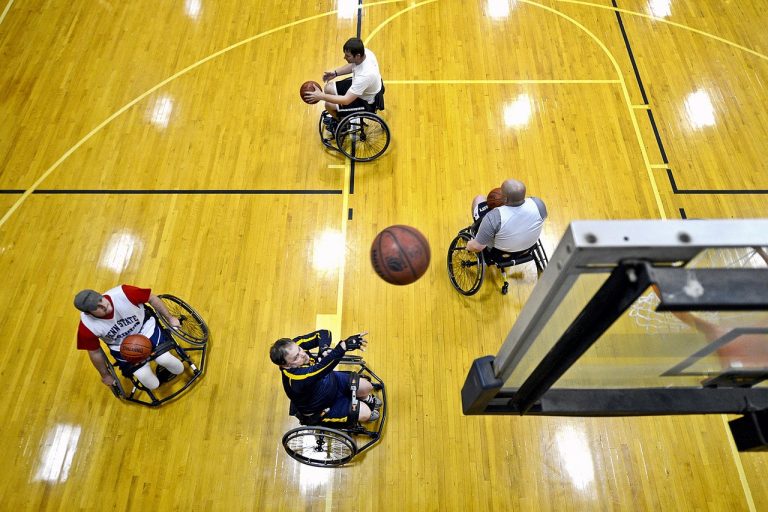General Rules of Long Jump
When you think about the long jump, did you know that the placement of the take-off board is essential to your performance? Getting it just right can make a significant difference in how far you jump. But that's just the beginning. There are several other key rules and techniques you need to master to excel in this event. Understanding the finer points of approach technique, landing mechanics, and equipment specifications will all play a role in your success. Stick around to uncover these essential details that can elevate your long jump game to the next level.
Take-off Board Placement
When positioning the take-off board for the long jump, make sure that it is placed at the exact distance from the pit as specified by the rules. The board marking is important as it determines where the athlete's take-off point will be. Correct placement guarantees that jumpers are not unfairly advantaged or disadvantaged. Take-off mechanics are highly dependent on this positioning. If the board is too far, athletes risk under-jumping, leading to a shorter jump. Conversely, if it's too close, overstepping becomes a concern, resulting in fouls.
The distance between the take-off board and the sand pit is crucial for achieving best jump distance. The board is strategically placed to allow athletes to build momentum and achieve maximum distance when leaping into the sand pit. Proper take-off mechanics, which are heavily influenced by the board's placement, enable athletes to convert their speed and power into horizontal distance efficiently. By adhering to the rules governing the board's positioning, athletes can better control their take-off and landing, ultimately enhancing the overall performance.
Proper Approach Technique
To optimize your long jump performance, mastering the proper approach technique is fundamental. The approach is a critical component of the long jump as it sets the foundation for a successful take-off and jump. Two key elements to focus on during the approach are runway speed and jump angle.
First and foremost, runway speed plays an important role in the long jump. The speed at which you approach the take-off board directly impacts the distance you can achieve in the jump. To maximize your performance, it is essential to build up your speed gradually during the approach. A controlled acceleration will allow you to maintain your momentum and transfer it effectively into the take-off.
Next, the jump angle is another important aspect to consider. The angle at which you take off during the long jump greatly influences the distance you can cover. Ideally, you want to take off at an angle that allows you to maximize both horizontal distance and height. Finding the right balance between these two factors is key to achieving a successful jump.
Fouls and Disqualifications
When it comes to the points system in long jump, understanding fouls is important. Disqualification criteria are clearly outlined in the rules to maintain fairness. Avoidable mistakes, such as overstepping the take-off board, can lead to point deductions or disqualification.
Fouls in Long Jump
In long jump competitions, athletes must adhere strictly to the rules to avoid fouls and potential disqualifications. Common fouls in long jump include fouling the takeoff, taking off from outside the board, and not completing the jump sequence within the designated area. Each foul incurs penalty consequences, such as a nullified attempt or a deduction of points. Understanding these common fouls is crucial for athletes to deliver valid jumps and avoid disqualification. By maintaining precision in their execution, athletes can enhance their performance and maximize their chances of success in long jump competitions.
| Common Fouls | Penalty Consequences |
|---|---|
| Fouling the takeoff | Nullified attempt |
| Taking off from outside the board | Deduction of points |
| Not completing the jump sequence within the designated area | Potential disqualification |
Disqualification Criteria
Understanding the specific fouls and disqualification criteria in long jump competitions is essential for athletes aiming to compete successfully and avoid penalties that may hinder their performance. In long jump, disqualification can occur if an athlete oversteps the takeoff board or fails to take off from behind it. Another critical criterion is the jump distance; if an athlete steps over the board during takeoff, the jump is considered a foul, and no distance is recorded. Additionally, the takeoff angle must not exceed 20 degrees; going beyond this limit can lead to disqualification. By adhering to these rules and maintaining proper technique, athletes can make sure their jumps are valid, maximizing their chances of success.
Avoidable Mistakes
To prevent avoidable mistakes leading to fouls and disqualifications in long jump competitions, athletes must guarantee precise adherence to takeoff rules and technique. Landing errors can result from improper body positioning during the landing phase, leading to fouls or even disqualification. Correcting these errors involves focusing on maintaining a proper body lean, extending the legs forward upon landing, and avoiding any backward movement. Additionally, improving jumping technique is pivotal in preventing fouls. Athletes should work on achieving the best takeoff angle, maintaining a strong and stable body position during flight, and executing a well-timed leg shoot for maximum distance. By addressing landing errors and continually refining jumping technique, athletes can minimize avoidable mistakes and enhance their performance in long jump competitions.
Landing Mechanics and Form
To excel in long jump, focus on proper foot placement and coordinating your arm swing effectively. These key points are essential for maximizing your distance and achieving a successful landing. By honing your landing mechanics and form, you can enhance your overall performance in the long jump event.
Proper Foot Placement
When executing the long jump, the proper foot placement upon landing is essential for optimizing performance and reducing the risk of injury. Jumping technique and positioning play a critical role in determining where your feet will land. Proper footwork and alignment make sure that the force generated during takeoff is efficiently absorbed upon landing. To achieve this, focus on extending your legs forward, keeping them slightly bent to absorb the impact. Your feet should ideally land flat or on the balls of your feet to maintain balance and stability. Making sure that your feet are aligned with your body's center of mass helps in controlling the landing and smoothly transitioning into the next phase of the jump. Practicing and refining these techniques will enhance your overall long jump performance.
Arm Swing Coordination
Effectively coordinating your arm swing during the landing phase is essential for maintaining proper landing mechanics and form in the long jump. Timing coordination and body control are important factors that can greatly impact your performance. Here's how you can improve your arm swing coordination:
- Syncing Upper and Lower Body Movements: Ensuring that your arms and legs move in harmony can help you maintain balance and stability during the landing.
- Utilizing Proper Arm Positioning: Positioning your arms correctly during the landing phase can aid in controlling your body's rotation and direction.
- Engaging Core Muscles: Activating your core muscles while coordinating your arm swing can enhance your overall body control and alignment for a successful landing.
Equipment Specifications and Regulations
Ensuring compliance with equipment specifications and regulations is important for maintaining fairness and safety in the sport of long jump. The equipment requirements and safety guidelines set forth by governing bodies such as the International Association of Athletics Federations (IAAF) are designed to create a level playing field for all competitors while also prioritizing athlete well-being.
When it comes to equipment requirements, athletes must use approved long jump pits with proper landing systems to prevent injuries. The sand in the pit should be of the right consistency and depth to guarantee safe landings. Additionally, the take-off board must meet specific dimensions to guarantee a fair start for all participants.
Regarding competition attire, athletes are usually required to wear running shorts or compression shorts along with a vest or T-shirt. However, it is important to check the specific guidelines of the competition you are participating in, as rules may vary. Footwear regulations are also strictly enforced to maintain fairness and safety. Spiked shoes are commonly used in long jump to provide traction and support during take-off and landing, but the length and type of spikes may be regulated to prevent damage to the track.
Measurement and Scoring Procedures
To accurately determine performance and rank athletes in long jump competitions, precise measurement and scoring procedures are essential elements of the event. Jump distance accuracy is vital in ensuring fairness and competitiveness. The scoring methods used must be standardized and transparent to uphold the integrity of the sport. When it comes to the measurement process, attention to detail is key. Pit placement plays a significant role in facilitating accurate measurements and fair competition. Here are some essential points to consider:
- Pit Placement: The long jump pit should be positioned in a way that allows for optimal measurement accuracy. It should be level, well-maintained, and free of any debris that could affect the landing or measurement process.
- Measurement Process: Officials use specialized tools such as measuring tapes or laser devices to determine the distance of each jump. The process must adhere to specific protocols to ensure consistency and precision in recording the results.
- Scoring Methods: Different scoring systems may be employed in long jump competitions, such as awarding points based on the distance jumped or using a cumulative scoring approach. These methods help rank athletes based on their performance accurately.
Frequently Asked Questions
How Can Athletes Improve Their Explosiveness and Power for the Long Jump?
To enhance your explosiveness and power for long jump, focus on plyometric training to boost your reactive strength and strength conditioning to improve overall power output. These methods can optimize your performance effectively.
Are There Any Specific Drills or Exercises That Can Help With Long Jump Technique?
To enhance your long jump skills, focus on specific drills and techniques. Incorporate strength training and plyometrics for explosive power. Refine your form and boost your performance by practicing these key components consistently.
What Are Some Common Mistakes That Athletes Make During the Long Jump and How Can They Be Corrected?
To improve your long jump performance, focus on common mistakes like inconsistent approach speed, early takeoff, or poor body positioning. Correct these by refining your run-up, timing your jump, and practicing proper body alignment.
How Important Is Flexibility in the Long Jump and What Stretches Should Be Included in a Warm-Up Routine?
To excel in long jump, flexibility is crucial. Tight muscles hinder performance and increase injury risk. Incorporate dynamic stretches like leg swings, hip flexor stretches, and calf stretches in your warm-up routine for best results.
Are There Any Mental Strategies That Can Help Athletes Perform Better in the Long Jump Competition?
To enhance your long jump performance, mental focus is key. Utilize visualization techniques to mentally rehearse each phase of your jump. Clear your mind, visualize success, and build confidence through mental preparation for peak results.






